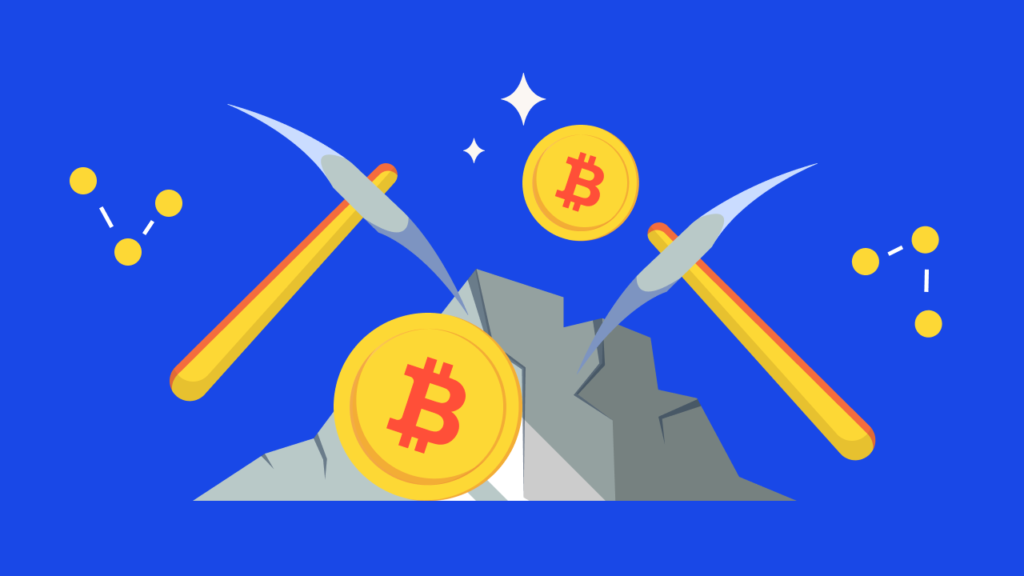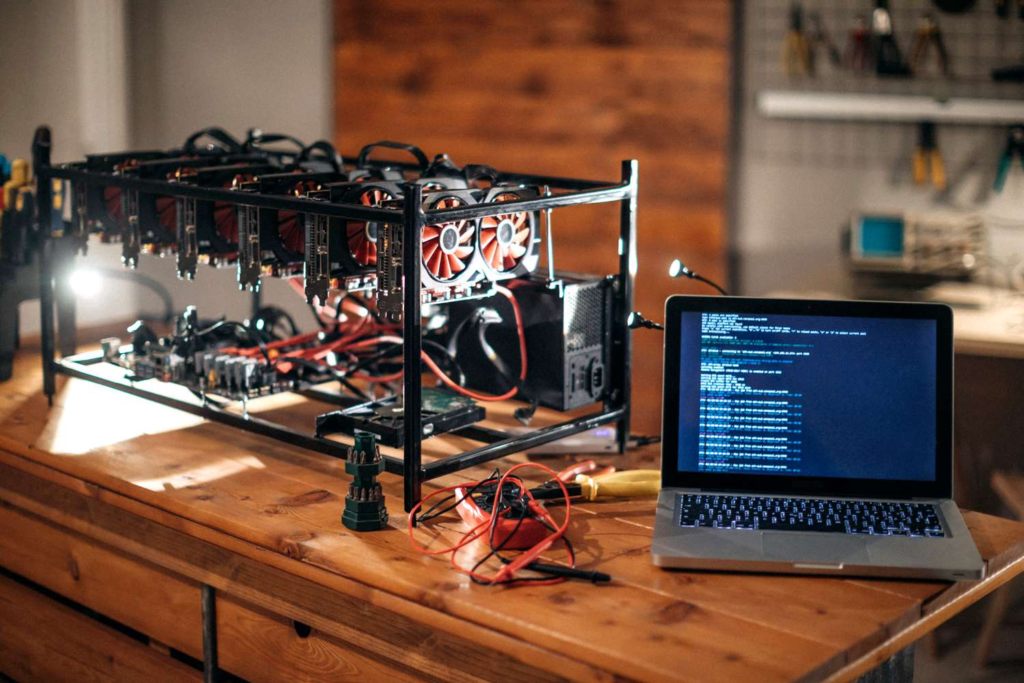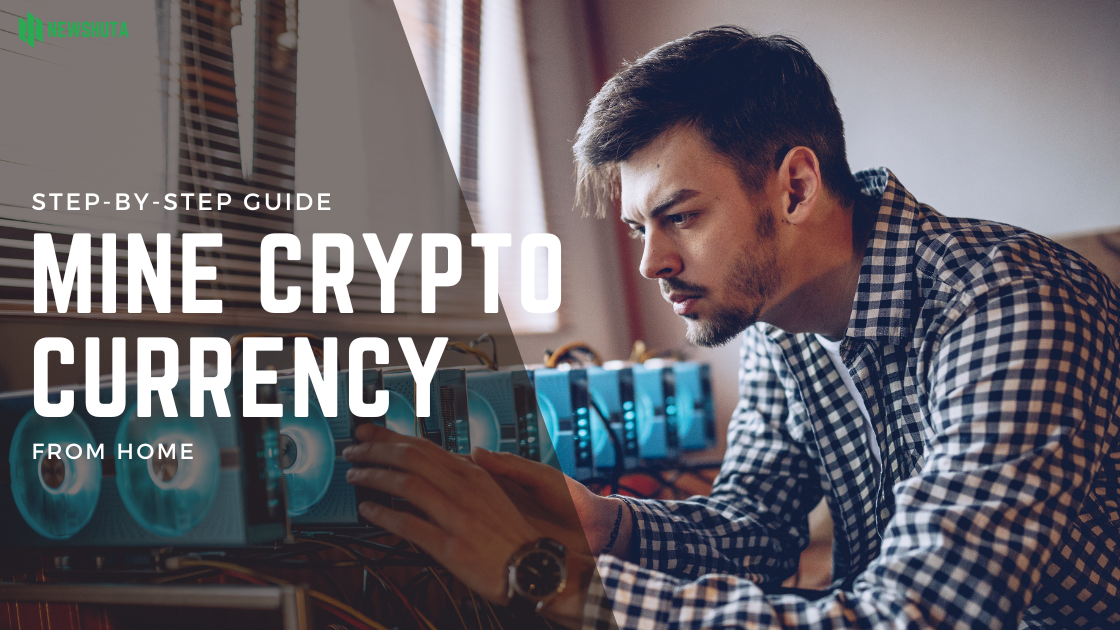At home mining cryptocurrency is done right by selecting the apt cryptocurrency, establishing suitable equipment such as ASICs or GPUs, setting up mining software and joining mining pools for increased profitability. Although it demands initial capital outlay and continuous maintenance, staying informed and optimizing your setup can make home mining an exciting activity.
Introduction
Today home-based miners are increasingly common among technology enthusiasts and newcomers looking to test the waters of digital currencies. With the right gear, knowledge of how things work in this industry and some patience you can transform your house into a small miner’s paradise. Read on this guide which will take you through all the basics before getting started.

What is Cryptocurrency Mining?
Cryptocurrency mining is when complex mathematical problems are solved by validating transactions on a blockchain network. Powerful computers used by miners compete to add a new block to the blockchain. The first miner who solves the puzzle gets paid in terms of certain quantity of cryptocurrency. For instance, Bitcoin miners earn Bitcoin for their laboriousness.
Is Mining Still Profitable?
Before we get into the how, let’s get a sense of the profitability. Profitability depends on a few factors:
- Cost of Electricity: It’s a process that is an energy hog. High electricity bills will cut into your returns.
- Mining Hardware: It is also worth bearing in mind the substantial initial hardware investment into mining rigs.
- Cryptocurrency Value: The value of the cryptocurrency you are mining. Again, this will relate to ROI.
- Mining Difficulty: As with each new entrant miner on the network, so the mining difficulty increases with each new miner.
Getting Started with Home Mining

Step 1: Choose Your Cryptocurrency
Also, not all cryptocurrencies are viable to be mined at home. Some popular options include:
- Bitcoin-BTC requires vast investment in ASIC or Application-Specific Integrated Circuit miners.
- Ethereum-ETH is usually mined using GPUs or Graphics Processing Units.
- Monero-XMR is a viable digital currency to be mined using the ordinary CPUs or Central Processing Units.
Step 2: Set Up Your Mining Rig
Hardware Requirements
- ASIC Miner or GPU/CPU: Depending on the crypto chosen, you’ll either have to use an ASIC miner in case of Bitcoin. Ethereum requires powerful GPUs while Monero can work efficiently with a high-performance CPU.
- Power Supply Unit (PSU): You’ll need a PSU that is reliable for powering your rig through mining.
- Cooling System: Mining involves the emission of a lot of heat. The provision of appropriate cooling helps ensure your hardware gives the best efficiency.
- Motherboard and RAM: These two components are dependent on the compatibility provided between your choice of either GPU or ASIC.
Recommended Hardware
Want to get into some cryptocurrency mining action? Here’s the lowdown! For Bitcoin mining, a good model of board is needed for Antminer S19 Pro. When it comes down to mining on Ethereum, either Nvidia GeForce RTX 3060 Ti or AMD Radeon RX 5700 XT does just fine. AMD Ryzen 9 3950X magic works well when mining on Monero!
Step 3: Software Setup
All ready to go? You’ll need the right software running on your gear and for the cryptocurrency you’ve chosen. CGMiner, for example, is a good ASIC miner; Ethminer works well with GPUs. Download a digital wallet to store whatever cryptocurrency you’ve mined. It needs to be compatible with the coin you’re mining. Join a mining pool to boost your chances of nailing rewards. Popular ones include Slush Pool for Bitcoin and Ethermine for Ethereum. You got this!
Step 4: Configuration and Optimization
- Download and Install Mining Software: Install according to directions provided by the software.
- Configure Settings: Enter wallet address, choose mining pool. Change as needed to optimize your performance and efficiency of your mining rig.
- Overclocking: if you are running Graphic Cards to mine, they can be set to run on higher power for increased processing speed. Do this at your own risk as you will increase heat and power consumption When.
Step 5: Start Mining
Everything is now set up and configured; run your mining software. Monitor the performance, temperature, power consumption, etc., on a regular basis. Join online forums/communities, such as Bitcointalk, to keep yourself updated about the latest trends and troubleshooting tips.
Is Home Mining Right for You?
While home mining might prove profitable, you have to weigh your costs against your benefits. Consider the following:
- Initial Investment: High costs of hardware purchase.
- Electricity Costs: Since mining is an energy-intensive process.
- Maintenance: Your mining rig will be running smoothly only if proper maintenance is done on it.
- Market Volatility: Since the value of cryptocurrencies tends to change, this might take a hit at profitability.
My Personal Journey into Cryptocurrency Mining
When I first came to mining-it rather interesting but a little frightening experience for me. I choose Ethereum because of its popularity and availability of GPU mining. I started with following config:
- Hardware: Five Nvidia GeForce RTX 3060 Ti GPUs, good motherboard, 32GB RAM, reliable 1600W PSU, and, of course good cooling system.
- Software: Ethminer and Ethermine pool.
- Wallet: I thus created an Ethereum wallet to hold my earnings.
Initial Cost In Home Mining
The initial cost was high:
- GPUs: $2,500 (each GPU was $500)
- Motherboard and RAM: $500
- Power Supply Unit: $200
- Cooling System: $300
- Miscellaneous (cables, setup tools, etc.): $100
Total cost was $3,600.
First Month’s Experience
The first month was a learning curve. I faced some ideal setting and configuration-related difficulties, and that affected my initial performance. My first month electricity bill came at a huge price of $150. It is much higher than the normal as this mining rig runs 24 hours a day and 7 days a week.
Profit and Team Effort
After all, despite these teething issues, I mined 0.5 ETH in my first month. Ethereum was at about $2,000 so my earnings were something in the order of $1,000. So, net profit considering the cost of electricity is $850 for my first month.
Well, I wasn’t alone in this journey-I had a small team of three friends, all mining. We have kind of divided the tasks-one did maintenance on the rigs’ hardware, another managed updating their software and I monitored performance and tweaked the settings.
Ongoing Operations
Today, our mining operation is more streamlined and efficient. We’ve expanded our setup to include additional GPUs and ASIC miners for Bitcoin, diversifying our mining portfolio. Our monthly electricity bill averages around $500, but our combined monthly profit now ranges between $2,500 to $3,000, thanks to better optimization and the rising value of cryptocurrencies.
Home mining is fun but tough. We’ll keep learning and adjusting. 🙂️️
Conclusion
Cryptocurrency mining at home is a thrilling enterprise that requires prudent thought and investing. You can establish a home mining operation that is successful by selecting the correct hardware, software, and cryptocurrency. Continuously stay updated and optimize your settings to maximize your productivity.
Find out more about specific areas of cryptocurrency mining from sources like CryptoCompare and CoinDesk
Note: This article is for informational purposes only and does not constitute financial advice.

